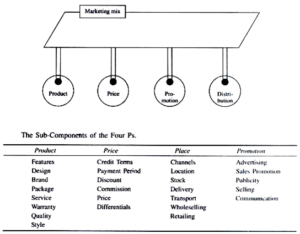Market Segmentation, Basis of Market Segmentation
Market Segmentation is a critical marketing strategy that involves dividing a broad target market into smaller, more manageable segments based on shared characteristics. This process enables businesses to tailor their marketing efforts to meet the specific needs of different consumer groups. The basis of market segmentation can be categorized into several key criteria, including demographic, geographic, psychographic, and behavioral factors.
Demographic Segmentation:
Demographic segmentation is one of the most common bases for segmenting a market. It divides consumers based on demographic factors such as:
- Age:
Different age groups have distinct needs and preferences. For instance, products aimed at teenagers, such as trendy clothing, will differ significantly from those aimed at older adults, like retirement planning services.
- Gender:
Men and women often have different buying behaviors and preferences. Marketers can tailor their messages and products accordingly. For example, beauty and grooming products are often marketed differently to men and women.
- Income:
Consumer purchasing power varies significantly across different income levels. Luxury brands typically target higher-income segments, while budget-friendly products are designed for lower-income consumers.
- Education Level:
Education can influence consumer preferences and behavior. For instance, products requiring technical knowledge might be marketed to more educated consumers.
-
Family Size and Lifecycle:
Family structures influence purchasing decisions. Marketers can create products that cater to single individuals, couples, or families with children.
Geographic Segmentation:
Geographic segmentation divides the market based on geographic boundaries. Factors influencing this type of segmentation include:
- Region:
Different regions may have distinct cultural, economic, and climatic conditions that affect consumer behavior. For example, winter clothing is more relevant in colder regions compared to warmer ones.
-
Urban vs. Rural:
Consumer needs and behaviors can vary significantly between urban and rural areas. Urban consumers might prefer convenience products, while rural consumers might favor traditional, locally sourced goods.
- Climate:
Climate can influence product usage and preferences. For instance, summer clothing and outdoor equipment may be marketed differently in tropical regions than in colder climates.
Psychographic Segmentation:
Psychographic segmentation focuses on the psychological aspects of consumer behavior, including values, interests, lifestyles, and personality traits. Key factors:
- Lifestyle:
Consumers’ lifestyles influence their purchasing decisions. For instance, health-conscious consumers might be targeted with organic food products and fitness-related services.
- Personality:
Different personality traits can affect consumer preferences. Brands often position themselves to resonate with certain personality types. For example, adventurous brands may appeal to thrill-seekers.
-
Values and Beliefs:
Consumers’ values and beliefs significantly impact their buying behavior. Brands that align with specific values, such as sustainability or social responsibility, can attract consumers who prioritize these attributes.
Behavioral Segmentation:
Behavioral segmentation divides the market based on consumer behaviors and interactions with a product or brand. Factors influencing behavioral segmentation:
-
Purchase Occasion:
Consumers may buy products based on specific occasions, such as holidays, birthdays, or back-to-school season. Marketers can create campaigns that align with these occasions to boost sales.
-
Benefits Sought:
Different consumers seek different benefits from the same product. For example, in the toothpaste market, some consumers may prioritize whitening, while others may focus on cavity protection.
-
Usage Rate:
Consumers can be segmented based on their usage patterns. Heavy users, moderate users, and light users may all have different needs and responses to marketing efforts.
-
Loyalty Status:
Consumers exhibit varying degrees of brand loyalty. Marketers can target brand advocates with loyalty programs while trying to convert occasional buyers into loyal customers.
Technological Segmentation:
With the rise of digital marketing, technological segmentation has emerged as an important basis. This involves categorizing consumers based on their technology usage and preferences:
-
Device Usage:
Consumers may prefer different devices (smartphones, tablets, laptops) for accessing information and making purchases. Marketers can optimize their content for specific devices.
- Digital Behavior:
Online consumer behavior, such as browsing habits and social media engagement, can provide insights into segmentation. Marketers can tailor their strategies based on how consumers interact with digital platforms.
Firmographic Segmentation (for B2B Markets):
In B2B (business-to-business) marketing, firms can be segmented based on organizational characteristics:
- Industry:
Businesses in different industries have unique needs and challenges. For instance, software solutions for healthcare providers will differ from those designed for retail businesses.
- Company Size:
The size of a business influences purchasing decisions. Large enterprises may require more complex solutions compared to small businesses.
- Location:
Geographical factors also play a role in B2B segmentation, with regional market dynamics impacting business decisions.
- Business Model:
Companies can be categorized based on their operational models (B2B, B2C, C2C), influencing how products or services are marketed.
Multi-Dimensional Segmentation:
Increasingly, businesses are adopting multi-dimensional segmentation approaches that combine various bases to create more refined segments. This method acknowledges that consumers may belong to multiple segments simultaneously. For example, a company may target health-conscious, urban consumers with high incomes who prioritize convenience. By utilizing a multi-dimensional approach, marketers can create highly tailored campaigns that resonate with specific audience segments.

